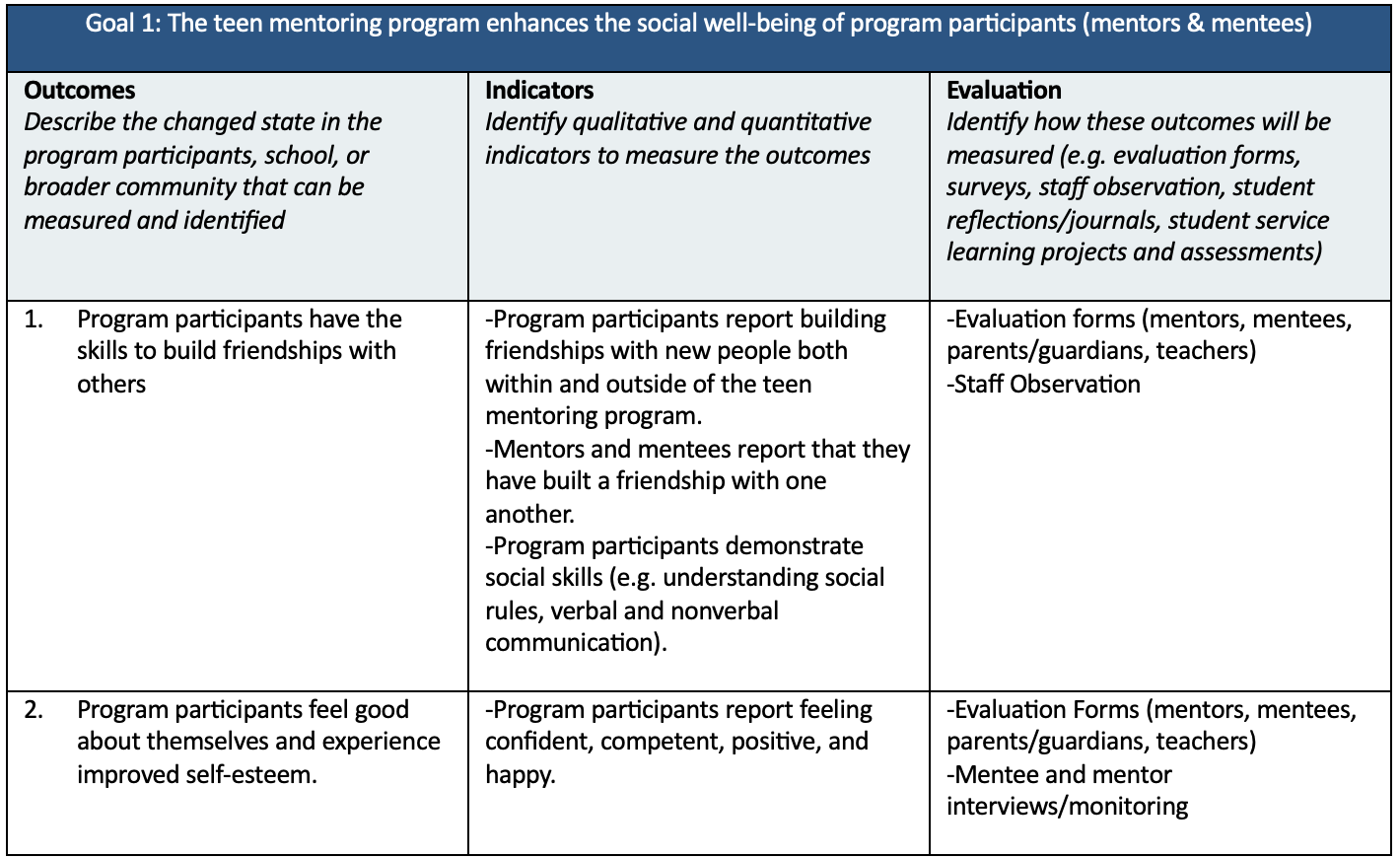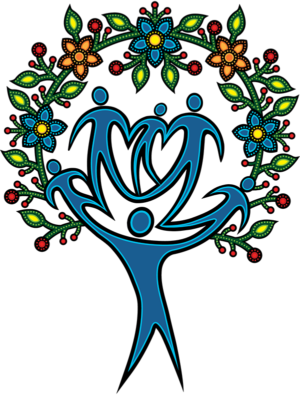Teen Mentoring Toolkit
Tools for planning, implementing and evaluating a quality school or community-based teen mentoring Initiative

Getting Started
“Students are entitled to welcoming, caring, respectful and safe learning environments that respect diversity and nurture a sense of belonging and a positive sense of self.” Education Act.
The planning process is essential to developing effective teen mentoring that will best serve your students and have the greatest impact on the school community. Keep in mind that you do not need to take on this process alone. Engage mentoring champions and stakeholders from your school and community such as teachers, administration, student groups, support staff, parents, counsellors and community partners in the process. If you are partnering with another school, be sure to include staff from the partner school. Support from administration has proven to be critical to the success and longevity of teen mentoring in schools.
There is flexibility and variation in how schools run teen mentoring and the design will depend on the purpose and intended outcomes of the program as well as the strengths and needs of the youth you intend to serve.

Mission Statement:
The mission statement is a general, concise statement outlining the purpose of teen mentoring in your school/organization. You may choose to create your own, or adopt the following: Teen mentoring at ______ (name of school or organization) will engage students in creating a welcoming, caring, respectful and safe community through the development of positive mentoring relationships and preparing mentors and mentees for their roles.

Program Goals & Outcomes:
Teen mentoring can be a tool for achieving important goals. These goals are ultimately achieved through the establishment of trusting, mutually beneficial developmental relationships between mentors and mentees.
Goals are broad, general statements of what the mentoring initiative intends to accomplish. They may be tied to the broader goals of the school community, an existing school project or initiative, and/or broader initiatives related to mental health; building and enhancing supportive relationships; high school completion; inclusion and diversity; and positive youth development. The following documents may be useful in developing appropriate goals and outcomes for your program.
- 40 Developmental Assets (Search Institute)
- The Comprehensive School Health Approach
- The Heart of the Matter: Character and Citizenship Education in Alberta Schools
- Benefits of Teen Mentoring
For each goal, you will need a series of outcomes. Outcomes are the benefits or changes for individuals, families, communities or populations during or after participating in teen mentoring. They may involve a change in knowledge, attitude, values, skills, behaviour, condition, or status. Teen mentoring initiatives have multiple levels of outcomes and benefits for mentors, mentees and the school community. It is encouraged to develop outcomes that are more immediate, measurable and short-term to focus your work and create the foundation for evaluation and assessment. School-based mentoring works best when focused on such goals as increasing connectedness, improving youth self-esteem and self-efficacy, and encouraging students to grow personally and academically.
Use Step 1: Tool A - Goals, Outcomes, and Evaluation Plan to plan your goals and outcomes, as well as
determine how you will measure these changes.
Example Initiative Goals and Outcomes:


Logic Model:
A logic model is a helpful tool for establishing a visual representation of the framework for your teen mentoring initiative to ensure that the structure and activities align with its desired outcomes. For example, if your school establishes teen mentoring to increase a sense of belonging and connectedness to the school environment, there must be a rationale behind that goal, and initiative practices that will lead to that outcome. A logic model helps to establish how the initiative will be designed to achieve specific outcomes for the students and the school community and will drive the evaluation process. Be sure that your logic model is as specific as possible. Step 1: Tool C – Logic Model Template is an example of a tool that can be used to develop a logic model for your teen mentoring initiative.
Example of completed Logic Models:
Boys and Girls Clubs Big Brothers Big Sisters of Edmonton and Area
YouthBuild Mentoring Logic Model
A logic model that has enough specific information on the activities planned, services provided, and expected
outcomes, can drive the evaluation process by clearly identifying the items your initiative needs to evaluate and their
measures. The Evaluation Forms for mentors and mentees will help you to evaluate the effectiveness of your initiative.
These can be adapted to your initiative’s specific goals and objectives.
As your teen mentoring initiative grows and develops based on what you learn through the evaluation process, so does the program logic model. See Reflecting, Learning & Improving.

Details:
Teen mentoring is most effective when it is highly structured. Consider the following details:
- How many mentors and mentees can the initiative support? This number should reflect the amount of time your school/organization can devote to the recruitment, screening, training and monitoring process.
- How long will the initiative last? Mentors and mentees need to know from the outset the length of the commitment they are making and how long they can expect the relationship to last. The program can be short-term or long-term (e.g. semester or year-long program). Longer program durations have been associated with stronger effects. It is recommended that teen mentoring relationships engage in at least ten planned
meetings to have a positive impact. - When and how often will the mentors meet with their mentees? The success of mentoring lies in mentors and mentees developing close friendships and meetings should happen regularly for these relationships to develop. It is helpful to set a time each week that mentors and mentors can schedule into their weekly timetable.
- Where will the mentors and mentees meet? Matches primarily meet at the school site, in full view of school staff. They often have access to school resources, such as the library, cafeteria, and gymnasium. If mentors and mentees are recruited from different schools, mentoring sessions can take place at the mentees’ school or the mentees can be transported to the mentors’ school.
- What will be the nature of the mentoring sessions? What types of activities will the matches do when they meet? The Match Meetings and Activities section of this toolkit has helpful ideas and resources. Focusing on
building trusting relationships has resulted in the best outcomes. - Will students receive credits or volunteer hours for their involvement? Initiatives can include volunteer mentors as part of a class, team, or club commitment. Alberta Education Career and Technology (CTS) mentoring courses provide the opportunity for students to participate in mentoring with structured learning and course credit opportunities, as well as the ongoing support and guidance of a supervising teacher.
- Who will oversee the initiative? Who will be engaged as advisors and staff? What will be their roles and responsibilities? The Monitoring and Support section of this toolkit provides important considerations and a sample Teen Mentoring Staff Job Description.
- What resources will be required to deliver the initiative? What will it cost to run the initiative? What is the initiative’s budget? School-based teen mentoring initiatives require fewer financial resources than community-based mentoring initiatives because staff can take advantage of existing resources and the school infrastructure. Some examples of costs may include marketing and recruitment materials, training supplies, food, handouts, activity supplies such as games and craft materials and transportation.. Determine ahead of time what costs are required and where the funding will come from.
- Is there any community involvement? Provide a list of partners and how they will be involved. Are there other community organizations working with youth in your school? Who are they and how can you work with them?
“We acknowledge that we are on and support Mentoring for Youth in the traditional territories across Alberta of the many First Nations from Treaty 6,7,& 8, the Métis of the 8 Alberta Settlements, and Inuit people whose footsteps have marked these lands for centuries.”
